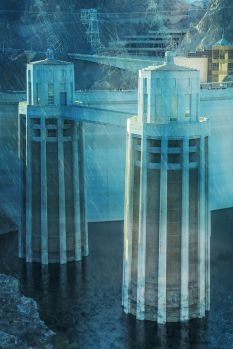Water Supply & Regulation: Difference between revisions
From ASDSO Dam Safety Toolbox
(Created page with "__NOTOC__ ---- {| align="right" style="width:10%; | 350px|x350px |- |style="text-align:center; font-size:75%;"| Hoover Dam Hydropower |} Many dams create reservoirs that store and supply water for a multitude of uses. This storage can be used to lessen the impact of a drought or water shortage. Water supply uses include fire control, agricultural production, domestic and industrial water supply, and more. In addition to storage, dams can be...") |
No edit summary |
||
| Line 2: | Line 2: | ||
---- | ---- | ||
{| align="right" style="width:10%; | {| align="right" style="width:10%; | ||
| [[Image:PowerGeneration.jpg|350px|x350px]] | | [[Image:PowerGeneration.jpg|350px|x350px|link=]] | ||
|- | |- | ||
|style="text-align:center; font-size:75%;"| Hoover Dam Hydropower | |style="text-align:center; font-size:75%;"| Hoover Dam Hydropower | ||
Revision as of 17:56, 10 June 2022

|
| Hoover Dam Hydropower |
Many dams create reservoirs that store and supply water for a multitude of uses. This storage can be used to lessen the impact of a drought or water shortage. Water supply uses include fire control, agricultural production, domestic and industrial water supply, and more. In addition to storage, dams can be used to regulate fluctuations in natural stream flows. This can be helpful for domestic and agricultural uses of water as well as providing supplemental releases in times of drought to maintain aquatic habitat.
